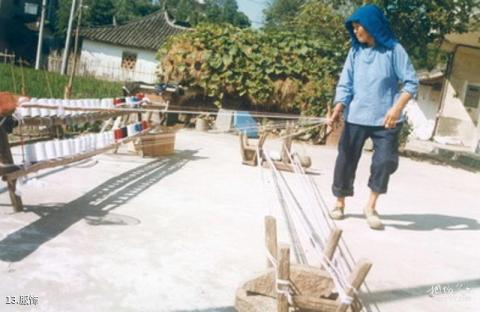
Clothing introduction: In the old days, the clothing fabrics in rural areas of Pinghu were mainly homespun cloth, commonly known as "Dubu". In rural areas, most households have wooden looms, and most women can spin and weave. Tomorrow's "Pinghu County Chronicle" contains: "Cotton is another big benefit besides sericulture." According to records, in the Ming Dynasty, there were more than 50,000 looms in Pinghu. By the Daoguang period of the Qing Dynasty, gauze shops, printing and dyeing shops in Pinghu were springing up all over the rural towns. Young men in rural areas wear double-breasted white shirts, usually with homespun "walnut buttons" (9 to 13 grades), and satin-waisted trousers when going to the streets or visiting guests; when working, they wear gray plaid homespun shirts and gray-black homespun trousers. ; In winter, men wear short cotton-padded jackets and large aprons around their waists, commonly known as "cloth quilts". Young women wear bright red and green coats with monotonous colors, and underwear wear bellybands, usually embroidered with the characters "福", longevity peaches, magpies climbing plum blossoms, etc., or wear vests, commonly known as "little hanging shoulders", slanted-breasted blouses, long skirts, trousers. Men in urban areas wear long blouses and mandarins made mainly of Shilin cloth and poplin cotton; rich people wear mainly woolen and satin fabrics. In summer, wear white silk or ripe Luo gowns, as well as leather coats of different colors. Urban women wear knee-length tops and trousers; later, various colors of cheongsam became popular, with various short coats and long stockings or trousers.
